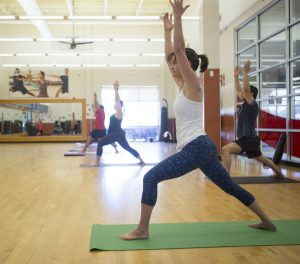One of the key reasons that muscles lose their natural suppleness and flexibility and can become prone to tears, aches, and pains is being inactive. If the situation is not remedied in time, loss of flexibility could lead to permanent changes in posture and normal muscle function. It is therefore imperative to maintain muscle flexibility as an important component of overall fitness.
So, what exactly is flexibility? 
Flexibility can be termed as the ability of your joints and body parts to execute their full range of motion. Flexibility is required in all your day-to-day activities such as bending, walking, lifting, etc. Being flexible allows your muscles to remain moble. But, like most things, flexibility decreases with age and it is very important to include flexibility exercises in your daily workout regimen.
The Benefits of Flexibility
There are a number of ways to test your flexibility. One of the most common ways, according to fitness experts, is to check if you can touch your toes while standing up with both legs straight. (You could check out various fitness sites available online for a more exact test.) If you find that you feel stiff, lacking in flexibility, suffering from bad posture or would like to increase your flexibility to improve your normal exercise routine, flexibility training is a must. Aerobic exercises and weight training include rapid and jerky movements, which can lead to joint and muscle fatigue. On the other hand, stretching exercises, yoga, and Pilates consist of gradual movements that can help to achieve greater flexibility.
Other Benefits
Being flexible helps to reduce soreness of muscles and improve posture. Stretching for slow gradual movements and holding each position for up to 30 seconds (without pain) helps reduce muscle soreness after exercise. Stretching also improves muscular balance and posture by realigning tissue and thereby reducing the effort it takes to maintain good posture throughout the day.Helps decrease risk of injury and improve physical performance. Flexible joints require less energy to move through a greater range of motion. This decreases your overall risk of injury and increases physical performance as well. Stretching works towards decreasing resistance in muscle tissue during any activity. Helps increase blood and nutrients to tissues. By stretching, you increase the temperature of your tissues and this increases transportation of nutrients and overall circulation. This in turn increases the range of motion and reduces degeneration of your joints. Helps reduce lower back pain. Stretching helps relax muscles. The more flexible your pelvic muscles, hamstrings, hip flexors, and quadriceps, the less stress to your lower back. Helps to enhance enjoyment of other exercise. In addition to decreasing soreness and fatigue of your muscles, stretching also helps relax both mind and body during any activity or exercise.
Ways to Improve Your Flexibility
So, what are some different ways to stay flexible? The best way to maintain flexibility is to stretch regularly. Whatever your age, you must incorporate stretching at least once a day. Even if it is not part of an exercise regimen, there are several simple stretching exercises that you can do at your desk or even in front of the TV. If time is short, focus on stretches that work the larger muscle groups such as shoulders, hamstrings, hips and lower back, and calf muscles. It is these areas that are prone to stiffness and soreness as we grow older. But remember to always be careful to not overdo it.
Flexibility exercises should also be incorporated into your normal exercise program, which may involve resistance (strength) training and cardiovascular exercise (walking, jogging, swimming and cycling). By doing so, you can improve both the quantity and quality of your muscles, joints and overall health. That being said, yoga is an effective way to complement your exercise routine for greater flexibility. Unlike most other physical exercise that work only on a physical level, yoga involves both your mental and physical capabilities. There is a balance of energy between the body and the brain as well as increasing your flexibility, toning your muscles, and improving your lung capacity. All basic yoga poses work towards increasing the flexibility of the body so that it is capable of performing more complicated poses as time goes by. It would be wise therefore to incorporate yoga as a regular part of your workout program.
There are several ways to improve your flexibility. Stretching and exercise help considerably but you also need to keep an eye on your diet and nutrition. Eating junk food and snacking on fatty and sugary snacks can make matters worse. You can promote fitness by combining a balanced diet (full of fresh fruits and vegetables) along with nutritional supplements that support joint health and improve your mobility.


